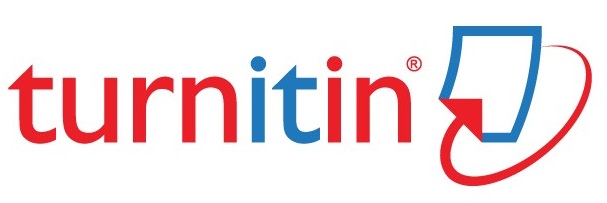Evaluasi Sitotoksik Alfa Mangostin Pada Kultur Sel Leukosit Manusia Secara In Vitro dan Uji Aktivitas Antioksidan
Abstrak
Kata Kunci
Teks Lengkap:
PDFReferensi
Chen LG, Yang LL, Wang CC. Anti-inflammatory activity of mangostins from Garcinia mangostana. Food Chem Toxicol. 2008;46(2):688–93.
Joshua D D, T.Gautschi J, Whitman S, Johnson TA, Gassner NC, Crews P, et al. Discovery of platelet- type 12-human lipoxygenase selective inhibitors by high-throughput screening of structurallay diverse libraries. Bioorg Med Chem. 2007;15(22):1–18.
Cui J, Hu W, Cai Z, Liu Y, Li S, Tao W, et al. New medicinal properties of mangostins: Analgesic activity and pharmacological characterization of active ingredients from the fruit hull of Garcinia mangostana L. Pharmacol Biochem Behav. 2010;95(2):166–72.
Wahyuni FS, Shaari K, Stanslas J, Lajis NH. Cytotoxic xanthones from the stem bark of Garcinia cowa Roxb. J Chem Pharm Res. 2015;7(1):227–36.
Novilla A, Djamhuri DS, Fauziah N, Maesaroh, Balqis, Widowati W. Cytotoxic Activity of Mangosteen (Garcinia mangostana L.) Peel Extract and α-Mangostin toward Leukemia Cell Lines (HL-60 and K-562). J Nat remedies. 2016;16(2):52–9.
Aisha AFA, Abu-Salah KM, Ismail Z, Majid AMSA. In vitro and in vivo anti-colon cancer effects of Garcinia mangostana xanthones extract. BMC Complement Alternative Medication. 2012;12:1.
Yousif M, Mohd N, Mariod AA, Mohan S, Ameen M, Ibrahim S. a -Mangostin from Garcinia mangostana Linn : An updated review of its pharmacological properties. Arab J Chem. 2016;9(3):317–29.
Likhitwitayawuid K, Phadungcharoen T, Krungkrai J. Antimalarial xanthones from Garcinia cowa. Planta Med. 1998;64(April 1994):70–2.
Tjahjani S. Antimalarial activity of Garcinia mangostana L rind and its synergistic effect with artemisinin in vitro. BMC Complement Altern Med. 2017;17(1):131.
Panthong K, Pongcharoen W, Phongpaichit S, Taylor WC. Tetraoxygenated xanthones from the fruits of Garcinia cowa. Phytochemistry. 2006;67(10):999–1004.
Auranwiwat C, Trisuwan K, Saiai A, Pyne SG, Ritthiwigrom T. Antibacterial tetraoxygenated xanthones from the immature fruits of Garcinia cowa. Fitoterapia. 2014;98:179–83.
Ngawhirunpat T, Opanasopi P, Sukma M, Sittisombut C, Kat A, Adachi I. Antioxidant, free radical-scavenging activity and cytotoxicity of different solvent extracts and their phenolic constituents from the fruit hull of mangosteen (Garcinia mangostana). Pharm Biol. 2010;48(1):55–62.
Lin J, Gao Y, Li H, Zhang L, Li X. DNA protective effect of mangosteen xanthones: An in vitro study on possible mechanisms. Adv Pharm Bull. 2014;4(2):147–53.
Mosmann T. Rapid colorimetric assay for cellular growth and survival: Application to proliferation and cytotoxicity assays. J Immunol Methods. 1983;65(1–2):55–63.
Kasemwattanaroj P, Moongkarndi P, Pattanapanyasat K, Mangmool S, Rodpai E, Samer J, et al. Immunomodulatory activities of alpha-mangostin on peripheral blood mononuclear cells. Nat Prod Communications. 2013;8(9):1257–60.
Van de Loosdrecht AA, Beelen RHJ, Ossenkoppele GJ, Broekhoven MG, Langenhuijsen MMAC. A tetrazolium-based colorimetric MTT assay to quantitate human monocyte mediated cytotoxicity against leukemic cells from cell lines and patients with acute myeloid leukemia. J Immunol Methods. 1994;174(1–2):311–20.
Knight JA. Review : Free Radicals, Antioxidants, and the Immune System. 2000;30(2):145–58.
Coquette A, Vray B, Vanderpas J. Role of vitamin E in the protection of the resident macrophage membrane against oxidative damage. Arch Int Physiol Biochim. 1986;94:529-534.
Marquez-Valadez B, Maldonado PD, Galvan-Arzate S, Mendez-Questa LA, Perez-De La Cruz V, Pedraza-Chaverri J, Cardenas MEC, Santamaria A. Alpha-mangostin induces changes in glutathione levels associated with glutathione peroxidase activity in rat brain synaptosomes. Journal Nutricional Neuroscience. 2012;15(5):13-19.
DOI: https://doi.org/10.25077/jsfk.5.3.201-206.2018
Article Metrics
Abstract view : 1915 timesPDF view/download : 1550 times
JSFK (Jurnal Sains Farmasi & Klinis) (J Sains Farm Klin) | p-ISSN: 2407-7062 | e-ISSN: 2442-5435
Diterbitkan oleh Fakultas Farmasi Universitas Andalas bekerjasama dengan Ikatan Apoteker Indonesia - Daerah Sumatera Barat
 JSFK is licensed under Creative Commons Attribution-ShareAlike 4.0 International License.
JSFK is licensed under Creative Commons Attribution-ShareAlike 4.0 International License.











